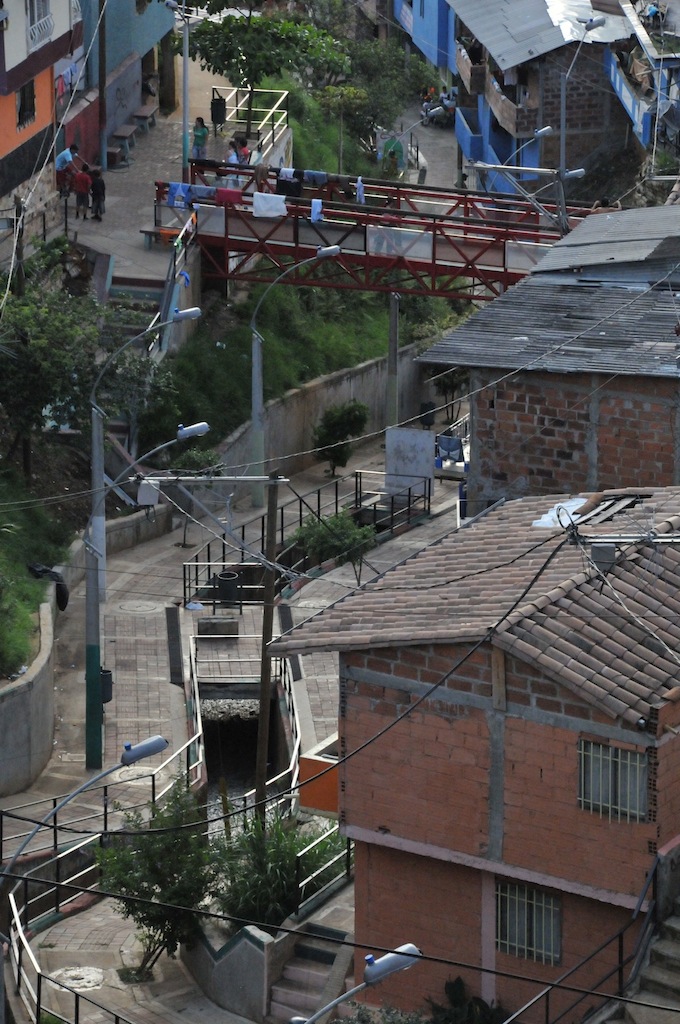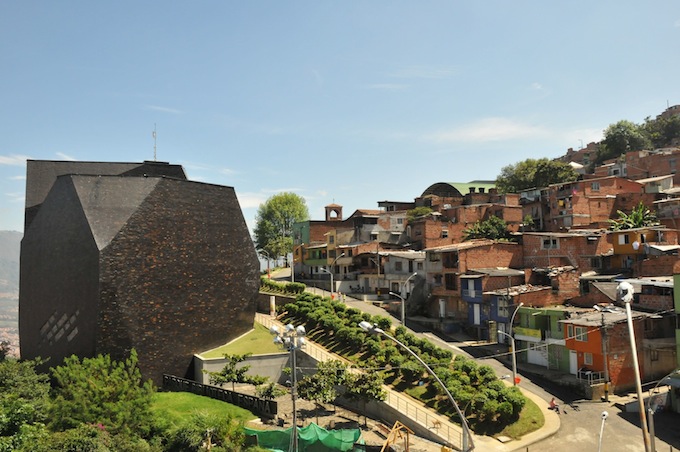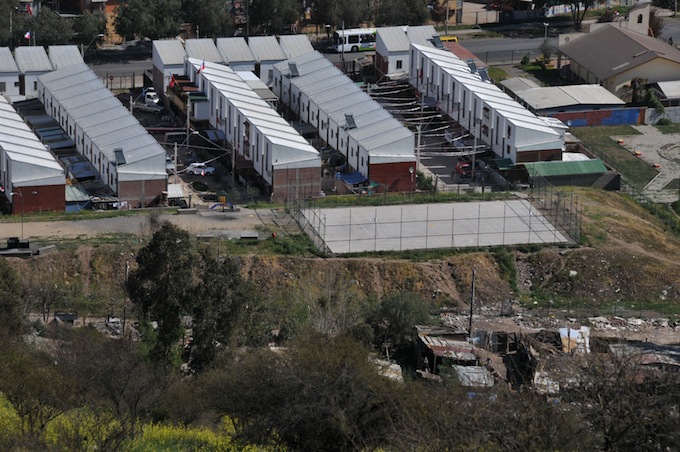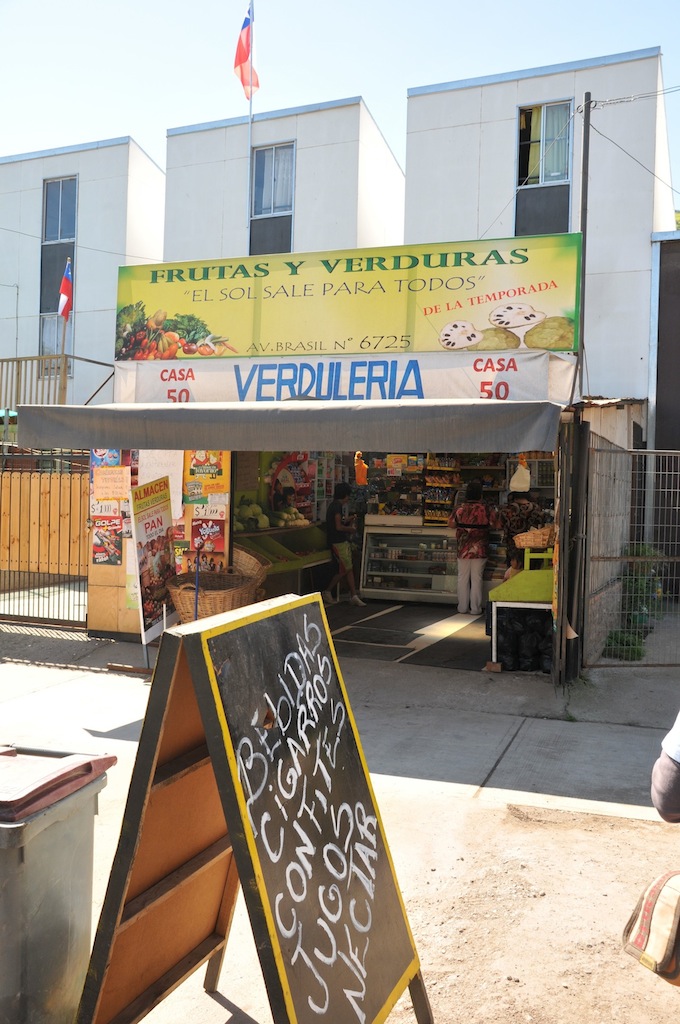Over the next months while the Design with the Other 90%: CITIES exhibition is on display at the United Nations Headquarters in New York several individuals whose own research explores the exhibition’s subject matter have been invited to write blog entries sharing their insights, related research and projects. – Cynthia E. Smith, Curator of Socially Responsible Design, Cooper-Hewitt, National Design Museum

Urban infrastructure in Medellín, Colombia. Informal settlements have been substantially improved with permanent housing, utilities and sewers, and pedestrian walkways – without displacing the former population.
Public architecture in South America put North America to shame. There’s something about the emerging Latin American countries that promotes viable, scalable, building projects that can transform a neighborhood, even a city – for everyone. Unlike many western countries, which have resources but lack the experience of the social dynamics of Majority World countries, South Americans seem to be able to balance access to some level of resources with an understanding of the problems they need to address – and build in a manner that elevates a broad sense of the public.

Parque Biblioteca España in the Santo Domingo neighborhood of Medellín, Colombia. A prominent library and park built in one of the most dangerous neighborhoods has transformed the area and become a destination for people from across the city.
A couple of examples from the mid-2000s: Medellín, Colombia's celebrated program for public institutional buildings and Chile’s efforts to build new public housing. Medellín's schools, parks, and libraries are remarkable, not just for their elevating design and commitment to serving underserved people (“We must build our most beautiful buildings for our humblest people,” in the words of Mayor Sergio Fajardo), but for the social infrastructure that managed such a large number of projects from design to completion – in just four years. The human design management process is every bit as impressive as the buildings themselves. Every aspect of society was involved: universities, bureaucracies, the private sector, churches, community groups, and political operatives who knew how to get projects done. The results speak for themselves.

Renca housing complex in Santiago, Chile. 170 units of 67 square meters built close to the economic center of the city, with access to transportation and services. This housing project replaces informal settlements.

A produce and food store built in front of a homeowner’s house. The value of these individual houses in Renca provides enough equity for owners to take loans and start businesses.
In Santiago, Chile a recognition that public housing was lacking became a rallying point, particularly in a country that prides itself on its ability to create infrastructure. A founding partner of Elemental, Andres Iacobelli, is now the Vice Minister of Housing, recognizing the need for professional knowledge as a basis for action. Elemental’s own program, trading more expensive locations for less individual building (i.e. better economic opportunities closer to the economic heart of the city), resulted in new social housing of significantly higher value – due to the location. Residents completed their houses on their own, and found the value of the completed house was double the investment they and the state made in the original project. They could take a loan against the equity and start a business. Alejandro Aravena, Elemental’s founder, lamented to me that he’d only been able to build two thousand units thus far in his career. But my response to him: who else has built more?
David Mohney is the Dean Emeritus of the University of Kentucky College of Design, and was the Founding Secretary of the Curry Stone Design Prize . He is developing a research consortium of design schools in both Latin and North America. All image credits: David Mohney